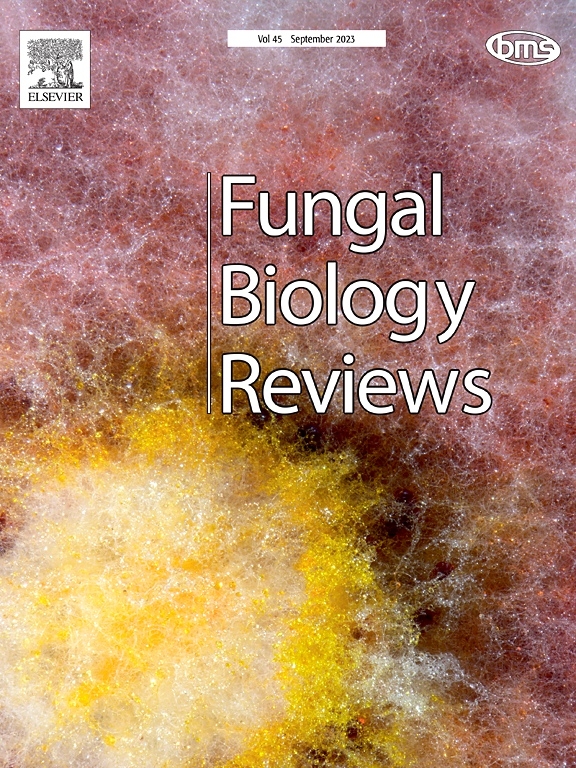Opening the black box of an underexplored and megadiverse group: history, taxonomy and functionality of dark septate endophytes (DSE)
IF 4.6
2区 生物学
Q1 MYCOLOGY
引用次数: 0
Abstract
Dark septate endophytes (DSE) are facultative, biotrophic fungi that have a close association with and are restricted to plant roots; typically, with darkly-pigmented hyphae, and which frequently produce microsclerotia within the host tissues. They do not form a single taxonomic category and are distributed across different classes, orders and families of the phylum Ascomycota, representing a highly taxonomically-diverse group. There has been greater emphasis on studying DSE that can resist abiotic stresses and which confer this ability to their host plants such as resistance to high concentrations of salts and heavy metals; conditions of low nutrient availability; and, periods of prolonged drought. Furthermore, it has been demonstrated that DSE have the potential to improve the performance of many crops, as evidenced by in vitro studies. The first observations of DSE date back over a century but, only recently, have studies focused exclusively on understanding this unique group of fungi, especially their taxonomy and functionality. This review provides a detailed history of DSE and highlights the many challenges posed by studying them. We also aim to encourage more in-depth and multidisciplinary research on DSE, particularly due to the urgent need for innovative and sustainable technologies in agriculture. DSE have shown great potential as candidates for developing future ‘bioinputs’ or ‘biologicals’.

打开一个未被充分探索和多样化的群体的黑盒子:暗隔内生菌(DSE)的历史、分类和功能
暗隔内生菌(DSE)是兼性的生物营养真菌,与植物根系密切相关,并且仅限于植物根系;通常,具有深色的菌丝,并且经常在宿主组织内产生微菌核。它们不形成一个单一的分类范畴,分布在子囊菌门的不同纲、目和科中,代表了一个高度分类多样性的群体。人们更加重视研究能够抵抗非生物胁迫并将这种能力赋予其寄主植物的DSE,例如对高浓度盐和重金属的抗性;营养可利用性低的条件;以及长时间的干旱。此外,体外研究已经证明,DSE有可能改善许多作物的性能。对DSE的第一次观察可以追溯到一个多世纪以前,但直到最近,研究才专注于了解这一独特的真菌群,特别是它们的分类和功能。这篇综述提供了DSE的详细历史,并强调了研究它们所面临的许多挑战。我们还致力于鼓励在农业领域开展更深入和多学科的研究,特别是因为迫切需要创新和可持续的农业技术。DSE作为开发未来“生物投入品”或“生物制剂”的候选物显示出巨大的潜力。
本文章由计算机程序翻译,如有差异,请以英文原文为准。
求助全文
约1分钟内获得全文
求助全文
来源期刊

Fungal Biology Reviews
MYCOLOGY-
CiteScore
10.60
自引率
0.00%
发文量
36
期刊介绍:
Fungal Biology Reviews is an international reviews journal, owned by the British Mycological Society. Its objective is to provide a forum for high quality review articles within fungal biology. It covers all fields of fungal biology, whether fundamental or applied, including fungal diversity, ecology, evolution, physiology and ecophysiology, biochemistry, genetics and molecular biology, cell biology, interactions (symbiosis, pathogenesis etc), environmental aspects, biotechnology and taxonomy. It considers aspects of all organisms historically or recently recognized as fungi, including lichen-fungi, microsporidia, oomycetes, slime moulds, stramenopiles, and yeasts.
 求助内容:
求助内容: 应助结果提醒方式:
应助结果提醒方式:


